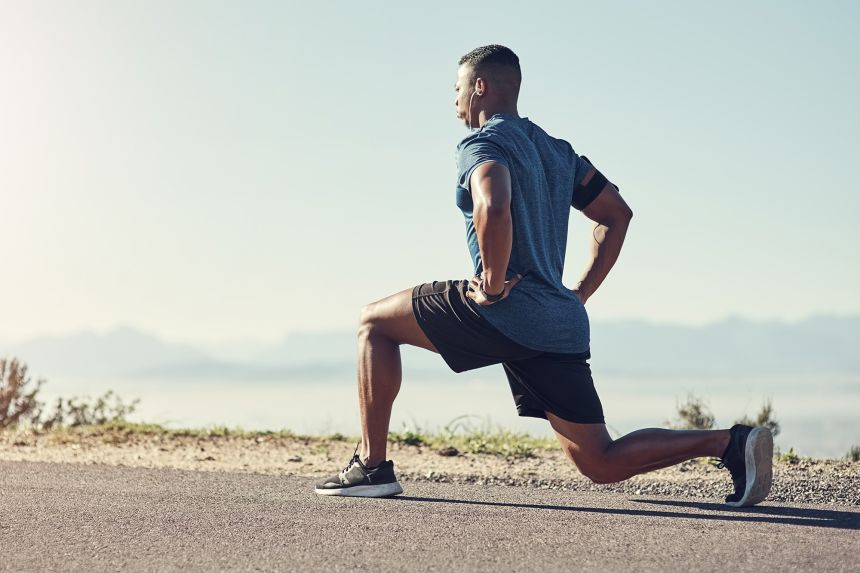Dana Santas, known as the “Mobility Maker,” is a certified strength and conditioning specialist and mind-body coach in professional sports, and is the author of the book “Practical Solutions for Back Pain Relief.”
Health experts universally recommend walking as one of the simplest, most accessible forms of exercise — and for good reason.
Regular walks offer plenty of physiological and mental health benefits, research has shown. The activity can improve cardiovascular health, boost mood and energy, reduce stress and anxiety, and even lower the risk of chronic diseases such as diabetes and heart disease.
However, many people move through their daily walks on autopilot — without attention to posture, alignment or movement quality — which can lead to negative physical consequences. Over time, poor walking mechanics can reinforce muscular imbalances, joint stiffness and compensatory patterns that contribute to pain and dysfunction.
The good news is you can turn any walk into a full-body tune-up by becoming more intentional about your movement, breathing and alignment. Here’s how to make every step count.
Understand the biomechanics of walking
The first step to better walking is to understand it as a movement pattern. Proper walking is a little more complex than simply putting one foot in front of the other. A healthy gait pattern is a coordinated full-body activity — the way your foot hits the ground and how your glutes fire, your core stabilizes and your arms swing in rhythm all matter.
Proper walking mechanics begin with a heel-to-toe foot strike that creates forward momentum while activating the muscles along the back of your legs and glutes. With each step, your core should gently engage to stabilize your pelvis and spine.
Your rib cage and hips rotate slightly in coordinated movement with your opposite arm and leg swing. This alternating and reciprocal motion not only propels you forward efficiently, but it also helps distribute weight and effort evenly through your joints and muscles.

When posture is compromised or muscle imbalances are present, your gait can change in ways that can counter the health benefits of walking by increasing your risk of chronic pain and injury.
Use these two simple ways to assess your walking mechanics:
1. Check the wear pattern on the bottoms of your shoes. Normal wear should be relatively even across the heel and forefoot. Excessive wear on one side of your shoes or more wear on one shoe than the other can indicate an imbalanced foot strike or gait asymmetry.
2. Enlist a family member or friend to capture video while you’re walking so you can observe your movement and posture from the side and behind. Be sure to walk at a normal speed in a pattern that feels like a comfortable gait for you. Don’t try to preemptively adjust since you want to observe any potential issues.
Many walking problems stem from issues with step length and foot positioning. Short, shuffling steps often prevent your glutes from firing properly. Similarly, “duck” walking — in which hips open and feet angle outward — decreases proper glute activation and postural alignment. The opposite problem, pigeon-toed walking with hips internally rotated and feet angled inward, also hinders glute activation and alignment.
Upper body mechanics play an equally important role in walking quality. Limited arm swing creates muscular tension and stress, especially in the neck, shoulders and back. Hunched posture with forward head position throws off alignment and creates muscle tension throughout the body. Asymmetrical movement patterns — often caused by constantly carrying a bag on one shoulder, holding a dog leash in one hand or even walking hand in hand with a partner — interrupt proper muscle firing and create muscular compensations in which certain muscles work harder and become overworked and tense.
Even breathing patterns can affect walking quality. Chest-oriented, shallow breathing creates rib cage stiffness and weakens core stability, affecting your overall movement pattern. These patterns might seem subtle but can have compounding effects over time, leading to pain particularly in the feet, knees, hips, back and neck.
As you head out for your next walk, use this checklist to ensure your body is in its best walking form:
Align your joints: Your shoulders and hips should stack vertically, with your spine providing a center line from the top of your head to the bottom of your pelvis. Avoid jutting your head forward or arching your lower back.
Mind your foot strike: Land softly on your heel or midfoot, rolling through to your toes. Try to keep your feet pointing forward and avoid heavy, flat footfalls.
Balance your weight and effort: Feel that you are evenly distributing your energy from one side to the other with equally weighted foot strikes and glute firing.
Use your glutes: Think about driving each step from the back of your hip. Feel your glutes engage as your foot pushes off.
Let your arms move: Swing your arms naturally in opposition to your legs. Keep your elbows soft and if you have to carry a bag or hold a pet leash, try to switch sides at regular intervals.
Keep your gaze forward: Look ahead rather than down at the ground — and definitely not at your phone! This helps keep you in an aligned, relaxed posture that also improves your overall visual field.
Be present: Maintain an awareness of your surroundings and continually assess how you’re feeling in your movement, posture and breathing.
Breathe consciously: Tune into your breath. Let it guide your pace, posture and presence.
Most people don’t think about how they breathe while walking, but your breathing can significantly influence posture, energy regulation and movement quality. Shallow, upper-chest breathing often accompanies poor posture and elevated stress levels, limiting rib cage mobility and reducing core engagement.
During walking, focus on rhythmic nasal breathing coordinated with your steps. Try inhaling for four steps and using a slightly extended exhale for six steps. This breathing pattern helps regulate your nervous system and encourages the natural expansion and contraction of your rib cage to support spinal alignment and mobility while walking.

Doing a few mobility exercises before your walk can prepare your muscles, improve joint range of motion and reduce tension for a more beneficial walking experience.
Try the following three movements:
1. Focus on feet and ankles by doing five ankle circles in each direction on each side.
2. Do a set of five step-back lunges on each side to prepare glutes, core, legs and feet.
3. Finally, stretch out tension in the backs of your legs, lengthen out your low back, and open up your chest and shoulders with a windmill twist on each side of your body.
Walking is so much more than just cardiovascular exercise or a way to get from here to there — it’s an opportunity to reinforce better posture, improve mobility and reconnect with your body. By walking with intention, tuning into your breath and upgrading your mechanics, you can turn this everyday activity into a powerful tool for greater health and wellness.
Sign up for CNN’s Fitness, But Better newsletter series. Our seven-part guide will help you ease into a healthy routine, backed by experts.

